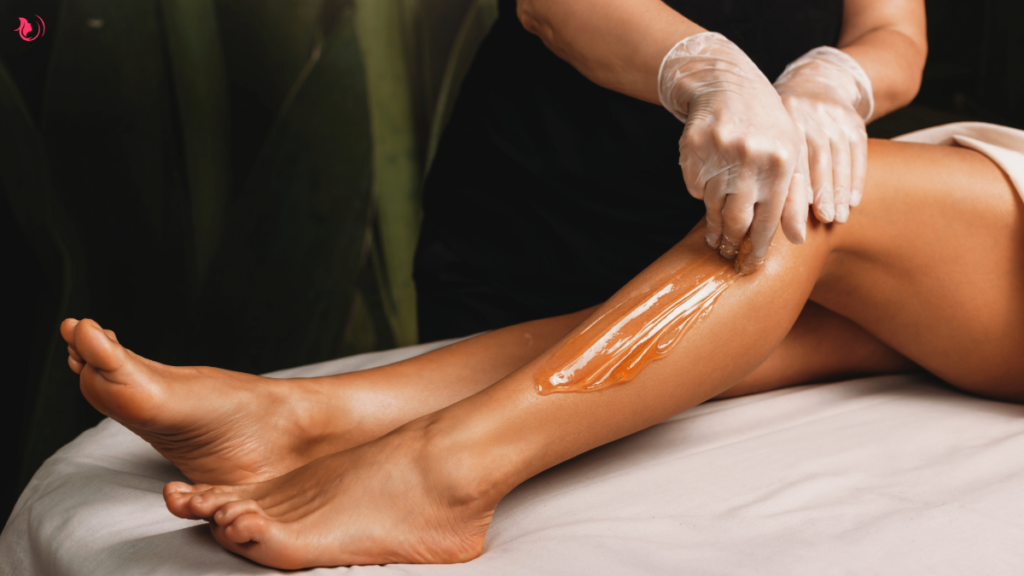For many of us, hair can be a problematic thing. In some cases, abundant hair can not only be a nuisance but also a cause of low confidence and self-esteem. The desire to remove unwanted hair dates back to the time of the Ancient Egyptians, who used a humble pair of tweezers made from seashells to remove hair from various parts of their bodies!
Thankfully, there are two more effective alternatives for removing unwanted hair; these are waxing and laser hair removal. Let’s explore these, looking at the benefits and pitfalls of each, to help you make an informed decision about which suits you best.
Waxing

Waxing is a quick method for achieving a clean, smooth finish immediately. Here are the benefits and pitfalls:
Upsides:
Waxing offers immediate results, making it an attractive option for those looking to achieve a smooth finish straight away. This is particularly beneficial for individuals with busy schedules or special occasions where they need a quick and effective hair removal solution. The instant results of waxing mean there’s no waiting period, unlike other methods that may require multiple sessions or time for the hair to fall out.
Waxing also provides the added benefit of exfoliation. The process removes not only unwanted hair but also dead skin cells, leaving the skin feeling smoother and more refined. This dual action of hair removal and exfoliation can enhance the overall appearance of the skin, making it look healthier and more radiant. Regular waxing sessions can contribute to improved skin texture over time.
Another significant advantage of waxing is that it doesn’t involve harsh chemicals, unlike some hair removal creams. These creams can often contain ingredients that may cause irritation, especially for those with sensitive skin. Waxing, on the other hand, is a more natural method that reduces the risk of adverse skin reactions. This makes it a preferable choice for individuals who are cautious about using chemical-based products on their skin.
Downsides:
- Temporary Results: Hair begins to grow back after about three weeks, and a small amount of stubble is necessary for the next waxing session.
- Pain: Waxing can be painful, especially for those with low pain tolerance.
- Skin Irritation: There’s a risk of red patches, ingrown hairs, and itching post-wax, particularly if done incorrectly.
- Scheduling: Forgetting to book appointments can leave you with unwanted stubble until you can get a last-minute session.
A word of advice if you’re considering waxing: book your sessions in advance. It can be super easy to forget to book them and end up with stubble you didn’t bargain for- you’re then stuck with this until you can get a last-minute appointment!
We recommend getting a professional wax over using your DIY skills, if you’re looking for the best results and a pain-free experience! You’re also far less likely to end up with itchy, unsightly red patches post-wax when a professional is performing it.
Laser Hair Removal

Laser hair removal has come a long way since its inception in the 1990s, now being suitable for all skin types. It works by penetrating the skin to destroy the follicle, resulting in permanent hair removal.
Upsides:
Laser hair removal offers long-lasting results, making it a preferred choice for those seeking a more enduring solution to unwanted hair. While it’s not truly permanent, the effects of laser hair removal can last up to two years, significantly outlasting the results of waxing. This extended duration reduces the need for frequent treatments, providing a more convenient and time-efficient option for individuals looking to maintain smooth, hair-free skin over a longer period.
One of the standout features of laser hair removal is its precision. The laser technology targets dark, coarse hairs specifically, leaving the surrounding skin undamaged. This precision ensures that the treatment is highly effective at removing hair without causing harm to the skin, making it a safe option even for delicate areas. The ability to focus on individual hair follicles allows for a thorough and efficient hair removal process.
Over time, laser hair removal leads to reduced hair growth. With each session, hair grows back finer and sparser, diminishing the overall volume and density of hair in the treated areas. This gradual reduction means that subsequent treatments become quicker and less frequent. For many, this decrease in hair growth can result in a significant improvement in the ease of maintaining smooth skin, with less effort required in the long term.
The versatility of laser hair removal is another significant advantage. It is suitable for all skin types and can be used to treat hair on various body parts, from the face and underarms to the legs and bikini area. This wide applicability makes laser hair removal an accessible option for many people, regardless of their skin tone or the areas they wish to treat. The adaptability of this treatment ensures that it can cater to diverse hair removal needs, providing a tailored solution for each individual.
Downsides:
- Multiple Sessions Required: Generally, 6-8 sessions are needed for optimal results, making it a more time-consuming process initially.
- Cost: The upfront cost is higher compared to waxing, though it may be more cost-effective in the long run.
- Potential Side Effects: While rare, there can be side effects like redness, swelling, or temporary skin lightening, especially if performed by an inexperienced technician.
- Not Truly Permanent: Despite popular belief, laser hair removal isn’t permanent; maintenance sessions are needed every couple of years.
One common misconception associated with laser hair removal is that it can cause side effects. However, this is only true if you’re taking specific medications that could cause a reaction.
Experienced clinicians will always ask you for a comprehensive breakdown of the medications you’re taking and explore your medical history, with a view to confirming laser hair removal treatment is suitable.
The Final Word
So we’ve weighed up the main benefits of each hair removal method; it’s safe to say both offer a more long-term and (in many cases) cost-effective answer to shaving.
Your skin health and sensitivity remain the most important factors when choosing what to go for and if you’re unsure, get in touch with a couple of places offering both options, to get professional confirmation of which would be best suited for you.


